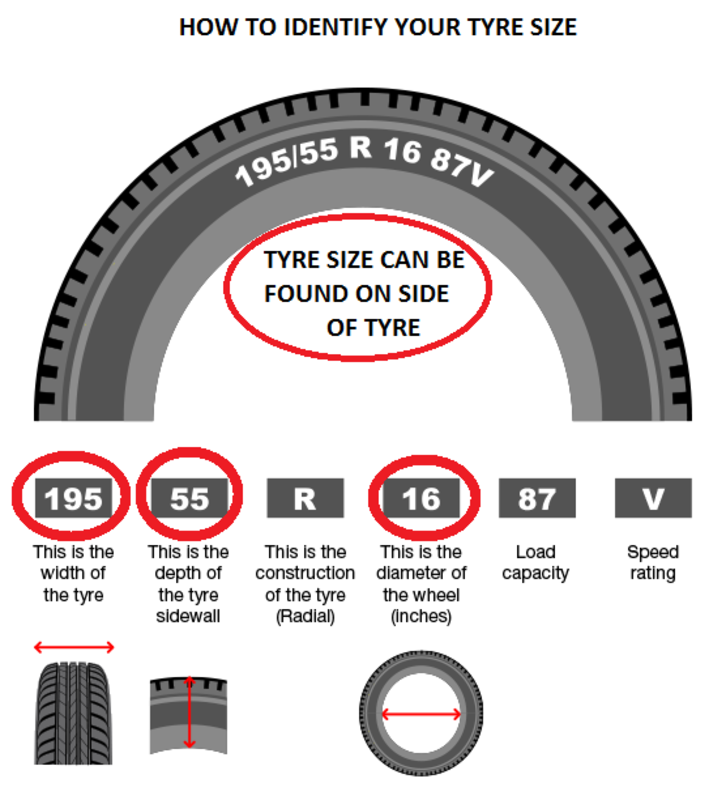Most modern passenger tires bear a tire speed rating, a designation indicating the tire’s designed speed capability. In other words, it’s the fastest speed a tire can handle before it does not perform as designed. Tire speed ratings do not imply that the vehicle may safely be driven at the maximum speed for which the tire is capable, particularly under adverse weather or road conditions.
Find Your Tire
If you’re wondering what tire speed rating your vehicle manufacturer recommends, simply look in the manual. You might also find it in the driver’s side door jamb, the gas tank hatch, or inside the glove box door – anywhere that lists the right tire code for your vehicle.
Speed rating is easy to locate because it’s usually the last item in the character sequence in the tire’s size code. For example in this tire code: “P205/60R16 82S,” S is the speed rating. To view the tire size code for your current tires, just look at the sidewall. Does the speed rating on each tire match what the manufacturer recommends? It should!
Also remember that the tire speed rating isn’t the same thing as a recommended travel speed. The rating will nearly always exceed maximum highway speed limits, but no tire or vehicle manufacturer advises driving faster than the law allows.
Speed ratings are the product of laboratory testing – with simulated speeds and loads. To receive any kind of rating, a tire must demonstrate that it’s capable of sustaining a particular speed. Industry standards govern the process of reaching and maintaining a given speed during a test.
However, it’s important to remember that the lab can’t simulate every conceivable condition. Think of your tire’s speed rating as an indicator of the product’s capability under controlled conditions (i.e. fully inflated, vehicle running properly, good weather conditions). Your tires’ actual speed capability may be less than its rated speed, since it is affected by factors such as inflation, wear, vehicle condition (including alignment), driving conditions and the duration at which speed is maintained. Speed ratings do not apply to tires that have been damaged, altered, under-inflated, overloaded or repaired.
Speed ratings do not apply to tires that have been damaged, altered, under-inflated, overloaded or repaired.
High performance driving all year long
See Tire Details This Tire Fits Your Vehicle See a map of stores near you where you can buy this tire
See Tires That Fit Does Not Fit Your Vehicle
See if it Fits Not Sure If This Tire Fits
Take control of the track
See Tire Details This Tire Fits Your Vehicle See a map of stores near you where you can buy this tire
See Tires That Fit Does Not Fit Your Vehicle
See if it Fits Not Sure If This Tire Fits
Sleek, sporty, and cornering performance
See Tire Details This Tire Fits Your Vehicle See a map of stores near you where you can buy this tire
See Tires That Fit Does Not Fit Your Vehicle
See if it Fits Not Sure If This Tire Fits
Take your sports car for a spin
See Tire Details This Tire Fits Your Vehicle See a map of stores near you where you can buy this tire
See Tires That Fit Does Not Fit Your Vehicle
See if it Fits Not Sure If This Tire Fits
Feel the rush with tires inspired by racing
See Tire Details This Tire Fits Your Vehicle See a map of stores near you where you can buy this tire
See Tires That Fit Does Not Fit Your Vehicle
See if it Fits Not Sure If This Tire Fits
Chase your competitive spirit
See Tire Details This Tire Fits Your Vehicle See a map of stores near you where you can buy this tire
See Tires That Fit Does Not Fit Your Vehicle
See if it Fits Not Sure If This Tire Fits
Impressive grip and control
See Tire Details This Tire Fits Your Vehicle See a map of stores near you where you can buy this tire
See Tires That Fit Does Not Fit Your Vehicle
See if it Fits Not Sure If This Tire Fits
Today’s speed rating system uses letters A through Z. Each letter corresponds to a specific speed. In general, that speed goes up as the rating advances alphabetically. For example, a tire rated “L” is good for a lower maximum sustained speed than one rated “N.”
Each letter corresponds to a specific speed. In general, that speed goes up as the rating advances alphabetically. For example, a tire rated “L” is good for a lower maximum sustained speed than one rated “N.”
But the tire speed rating system isn’t without its quirks. For instance, the system’s European roots give it unusual mile per hour maximums. Another such quirk is that the letter “H” is out of place. Instead of appearing after “G,” it falls between “U” and “V” as does the speed to which it corresponds.
Additional speed rating “anomalies” include the following:
“I,” “O,” and “X” speed ratings don’t exist. Likewise, some speed rating charts don’t include the “P” rating.
Tires with the lowest speed ratings are usually listed as “A” followed by a number– for example, “A1,” “A2, “A3,” and so on.
Some tires carry “W” or “Y” speed ratings. Manufacturers may also insert “Z” into the size description (in the tire code data between aspect ratio and diameter) for these kinds of tires.
When the speed rating system was first developed, the highest speed rating was the unlimited “V” rating. This was for tires whose maximum sustained speed was 149 mph (240 kph) or more. Then, as more manufacturers came out with tires that could handle speeds in excess of 149 mph but still hit a maximum speed at some point, “V” became limited (149 mph instead of 149+ mph) and “W” and “Y” speed ratings were added to the chart.
Many tire speed rating charts also list the “Z” rating as anything over 149 mph. Some manufacturers will insert a “Z” in the middle of the tire size description (right after the aspect ratio) when the tire is rated at “W” or “Y.” And if a tire is rated in excess of 186 mph (300 kph), manufacturer’s usually will list a “Z” within the size description, per industry standards.
EXPLORE PERFORMANCE TIRESThe following speed ratings are those you’re most likely to encounter for ordinary vehicles.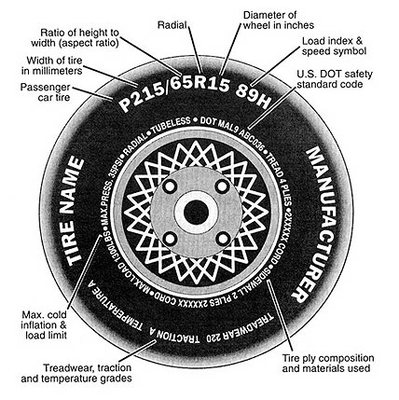 They begin with a maximum speed of 118 mph (190 kph) and increase from there.
They begin with a maximum speed of 118 mph (190 kph) and increase from there.
Indicated by a letter, each rating corresponds to a specific speed.
With a maximum speed of 118 mph, you usually find tires with speed rating “T” on family sedans and minivans.
If you recall from earlier, the “H” speed rating doesn’t appear after “G” but between “U” and “V.” It represents a maximum speed of 130 mph (210 kph) and is commonly found on sports sedans and coupes. In earlier incarnations of the speed rating system, “H” stood for “high performance,” which is why it maintains an unusual position in the speed rating spectrum today.
Once the highest speed rating a tire could have, “V” used to represent a maximum of 149 mph (240 kph) or more. Nowadays, it means 149 mph but no higher.
A relatively new addition to the speed rating chart, tires with speed rating “W” can achieve a maximum sustained speed of 168 mph (270 kph).
A “Z” rating can mean different things. While it nearly always means a high performance tire for high-performing sports cars, “Z” may actually appear in the middle of a tire’s size information. When it does, it represents either a maximum speed of more than 149 mph (240 kph) or 186 mph (300 kph). Which of those speeds it refers to will depend on the specific tire. Contact the manufacturer to get details on any Z-rated tires. Sports car owners are more likely to encounter this speed rating than owners of typical family sedans.
Always choose the speed rating that corresponds to your vehicle manufacturer’s specifications, and be sure all four tires have the same rating. Speed ratings are based on laboratory tests under specific, controlled conditions. While these tests relate to performance on the road under those conditions, remember that real-life driving is rarely identical to test conditions.
Find Your Tire
A tire’s speed rating indicates the optimal speed that the tire can safely maintain over time.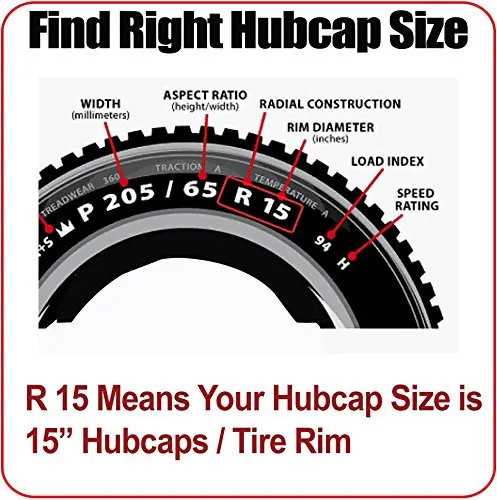 In short, it’s the fastest speed a tire can handle before it no longer performs as designed. The higher the speed rating, the better control and handling you’ll have at higher speeds.
In short, it’s the fastest speed a tire can handle before it no longer performs as designed. The higher the speed rating, the better control and handling you’ll have at higher speeds.
The speed rating system was developed to help control the safe performance of tires at standardized speeds. A tire’s certified speed rating is given a letter from A to Z, ranging from 5km/h (3mph) to above 300 km/h (186 mph).
This rating system (see below) shows the top speed for which a tire is certified. It does not indicate the total performance capability of a tire.
The speed rating system used today was developed in Europe in response to the need to control the safe performance of tires at standardized speeds. When the rating system was originally developed, the "Unlimited V" category of over 210 km/h (130 mph) was the top speed rating possible.
As manufacturers developed bigger and better tires, it became necessary to regulate performance at standardized speeds to ensure safety. The "Limited V" category of 250 km/h (149 mph) was then created, and eventually the "Z" speed rating was added as the top speed rating. (Always consult the manufacturer for the maximum speed of Unlimited Z tires.)
The "Limited V" category of 250 km/h (149 mph) was then created, and eventually the "Z" speed rating was added as the top speed rating. (Always consult the manufacturer for the maximum speed of Unlimited Z tires.)
You can find your tire speed rating in a number of places, typically in the owner’s manual, driver’s side doorjamb, glove box door, and gas tank hatch. Recent standardization has changed so all ratings except "Unlimited ZR" incorporate the speed symbol and load index as part of every tire’s service description on the tire’s sidewall. If you’re reading your tire sidewall, the speed rating will be the last item in the character sequence in the tire’s size code. Below is an example of a the description on a tire’s sidewall: 2015/60R15 91V. Here, the tire would have a speed rating of V. V-rated tires can be driven at 149 MPH.
TIRE DESCRIPTION
| 205/60R15 91V | |
|---|---|
| 205 = Section Width in Millimeters | |
| 60 = Aspect Ration | |
| R = Radial Construction | |
| 15 = Rim diameter in Inches | |
| 91 = Load Index | Service Description |
| V = Speed Symbol | |
Tires having a maximum speed capability over 149 MPH may have “ZR” in the size designation. Tires with a maximum speed capability over 186 MPH are required to include “ZR” in the designation. Below are examples of tire sizes with a “ZR” speed rating.
Tires with a maximum speed capability over 186 MPH are required to include “ZR” in the designation. Below are examples of tire sizes with a “ZR” speed rating.
ZR DESIGNATION
| EXAMPLES | |
|---|---|
| Tire Designation | Maximum Speed |
| P275/40ZR17 93W | 270 km/h (168 mph) |
| P275/40ZR17 93Y | 300 km/h (186 mph) |
For tires with a maximum speed capability higher than 240 km/h (149 mph), a "ZR" may appear in the size designation. Tires with a maximum speed capability higher than 300 km/h (186 mph), require a "ZR" in the size designation. Consult the tire manufacturer for maximum speed when there is no service description.
TIRE SPEED CAPABILITIES
| SPEED SYMBOLS | ||
|---|---|---|
| Symbol Speed | Speed (km/h) | Speed (mph) |
| A1 | 5 | 3 |
| A2 | 10 | 6 |
| A3 | 15 | 9 |
| A4 | 20 | 12 |
| A5 | 25 | 16 |
| A6 | 30 | 19 |
| A8 | 40 | 25 |
| B | 50 | 31 |
| C | 60 | 37 |
| D | 65 | 40 |
| E | 70 | 43 |
| F | 80 | 50 |
| G | 90 | 56 |
| J | 100 | 62 |
| K | 110 | 68 |
| L | 120 | 75 |
| M | 130 | 81 |
| N | 140 | 87 |
| P | 150 | 94 |
| Q | 160 | 100 |
| R | 170 | 106 |
| S | 180 | 112 |
| T | 190 | 118 |
| U | 200 | 124 |
| H | 210 | 130 |
| V | 240 | 149 |
| W | 270 | 168 |
| Y | 300 | 186 |
Need help understanding the speed rating on tires? Our technicians have got you covered.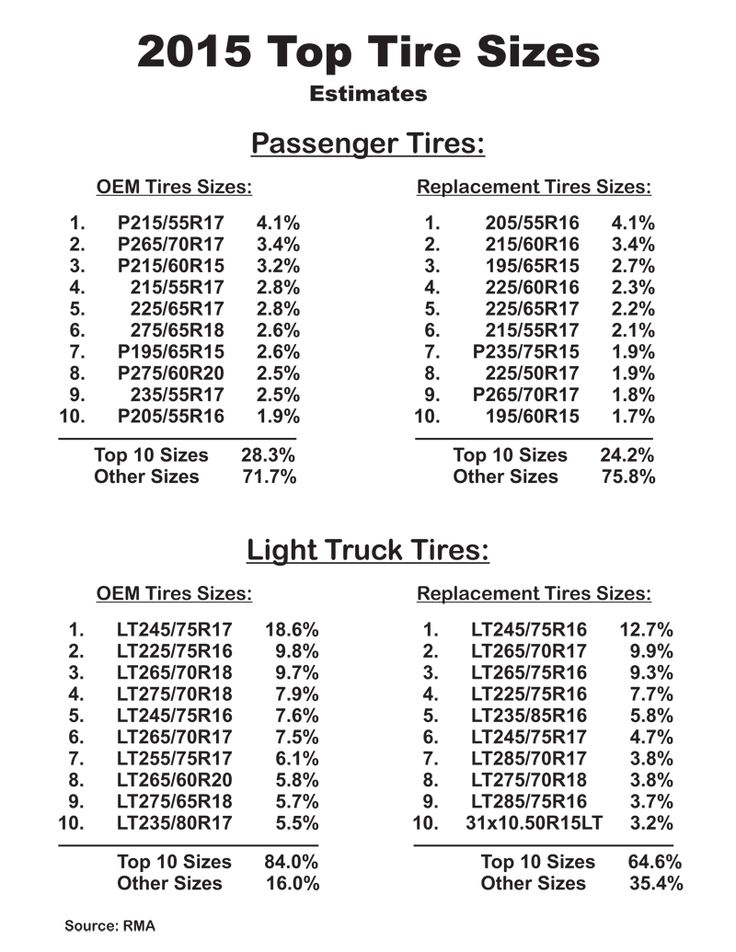 Bring your vehicle by your local Tires Plus and we’ll help you understand your tire numbers, tire size, and more!
Bring your vehicle by your local Tires Plus and we’ll help you understand your tire numbers, tire size, and more!
{{storeNumber}}
{{storeName}}
{{link-icon "Call Us" mobileCallLink null "call-cta"}} {{link-icon "Directions" directions "_blank" "directions-cta"}}
{{address}}
{{city}}, {{state}} {{zip}}
{{#if activeFlag}} {{#ifCond mystore "or" myPreferredStore}} {{#ifCond storeType 'eq' "TPL"}}
*Call store for appointment {{phone}}
{{else}} {{#if onlineAppointmentActiveFlag }}
{{#if myPreferredStore}}
{{else}}
*Call store for appointment {{phone}}
{{/if}} {{/ifCond}} {{else}} {{#ifCond storeType 'eq' "TPL"}}
*Call store for appointment {{phone}}
{{else}}
Schedule Appointment {{#if onlineAppointmentActiveFlag}} {{else}}
*Call store for appointment {{phone}}
{{/if}}
{{/ifCond}} {{/ifCond}} {{else}}
*Temporarily Closed Due To: {{temporarilyClosedReason}}
{{/if}} {{#if isMilitaryStore}}
*This location is on an active US military base. You may need military ID to access the location.
You may need military ID to access the location.
{{/if}}
The sidewall of a tire has all the information you need to know about it. Below you will find a small guide to deciphering all these numbers and letters.
Tire width from side to side in mm.
Ratio of the section height of a tire to its width, expressed as a percentage. For example, a profile height of 65 means that the height of the tire is 65% of its width
Wheel diameter (height) in inches.
The maximum load per tire (in kg) depends on the load index. The load index value is printed on the sidewall of the tire to the right of the diameter value.
For example, for a tire with a load index of 91, the maximum load is 615 kg.
When buying new tires, consider the load and speed indexes in combination. In addition, you should always follow the recommendations of your vehicle manufacturer.
The Speed Index is the maximum allowable speed at which a properly inflated tire can be driven under load. The speed index, indicated by a letter, is located after the load index on the sidewall of the tire. For example, for a tire with a speed index of V, the maximum speed is 240 km/h.
When buying new tires, it is important to consider that their speed rating matches the vehicle's speed capabilities.
Your vehicle may be compatible with tires with load and speed ratings that differ from those specified in the manufacturer's documentation.
However, it is always worth checking first whether the vehicle manufacturer allows the installation of such tires and whether their operation is permitted by the current legislation.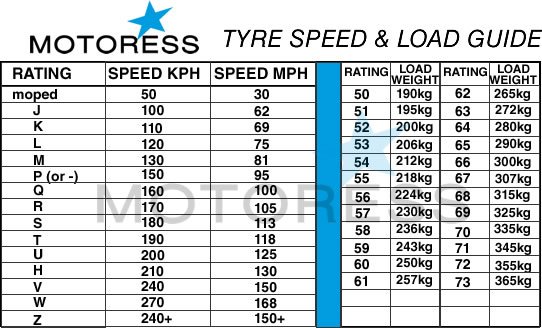 Always comply with all legal requirements in your country regarding the characteristics of the tires used, and also take into account the recommendations of the vehicle manufacturer regarding speed and load. If necessary, consult your dealer before purchasing or installing tires.
Always comply with all legal requirements in your country regarding the characteristics of the tires used, and also take into account the recommendations of the vehicle manufacturer regarding speed and load. If necessary, consult your dealer before purchasing or installing tires.
Is it possible to use tires with higher speed ratings than those recommended by the car manufacturer?
Yes, you can. However, it is always worth checking first whether the vehicle manufacturer allows the installation of such tires.
Can tires with higher load indexes be used than recommended by the car manufacturer?
Yes, you can. However, it is always worth checking first whether the vehicle manufacturer allows the installation of such tires.
Can tires with higher speed and load ratings be used than recommended by the car manufacturer?
Yes, you can. However, it is always worth checking first whether the vehicle manufacturer allows the installation of such tires.
Can tires with lower speed ratings be used than those recommended by the car manufacturer?
Yes, it is possible. These can be all-season or winter (M+S) tires with a lower speed index, if: a) a sticker indicating the maximum speed limit is in the driver's field of vision; b) the driver does not exceed the specified maximum speed limit. However, it is always worth checking first whether the vehicle manufacturer allows the installation of such tires and whether their operation is permitted by the current legislation.
Can tires with higher load indexes and lower speed indexes be used than recommended by the car manufacturer?
Yes, it is possible. These can be all-season or winter (M+S) tires with a lower speed index, if:
a) a sticker indicating the maximum speed limit is in the driver's field of vision;
b) the driver does not exceed the specified maximum speed limit. However, it is always worth checking first whether the vehicle manufacturer allows the installation of such tires and whether their operation is permitted by the current legislation.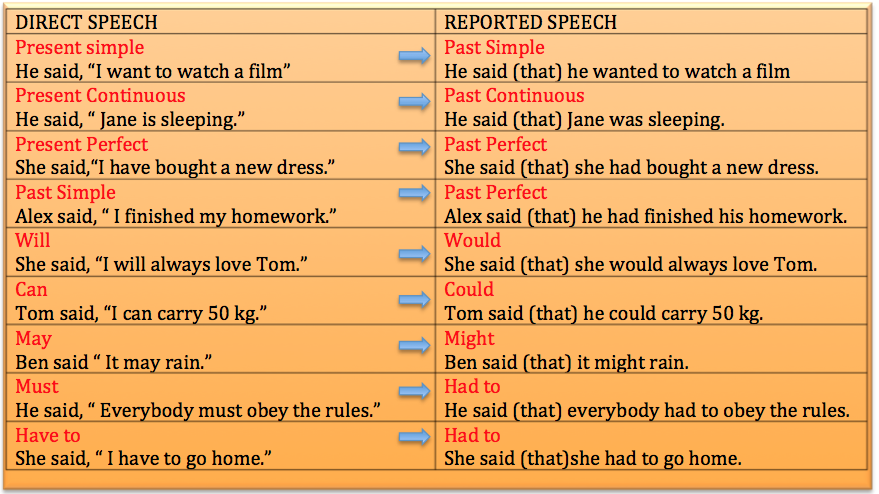
Refer to the vehicle owner's manual for load limits. Overloading a vehicle puts unnecessary stress on its tires and other structural elements. This can lead to poor handling, increased fuel consumption and tire damage. Tires may develop large cracks, defects or tears.
The presence of the letter "P" or the absence of letters indicates that this is a tire for a passenger car.
The letter "R" stands for radial construction. Most tires manufactured today are radial.
This mark indicates that the tire meets the United Nations Economic Commission for Europe (UNECE) standards for pneumatic tyres.
This is the maximum pressure for your tire. Check your vehicle's owner's manual for recommended tire pressures, which affect your vehicle's handling, cornering and braking behavior, and fuel consumption.
The letters "TWI" indicate the location of the tire tread wear indicators.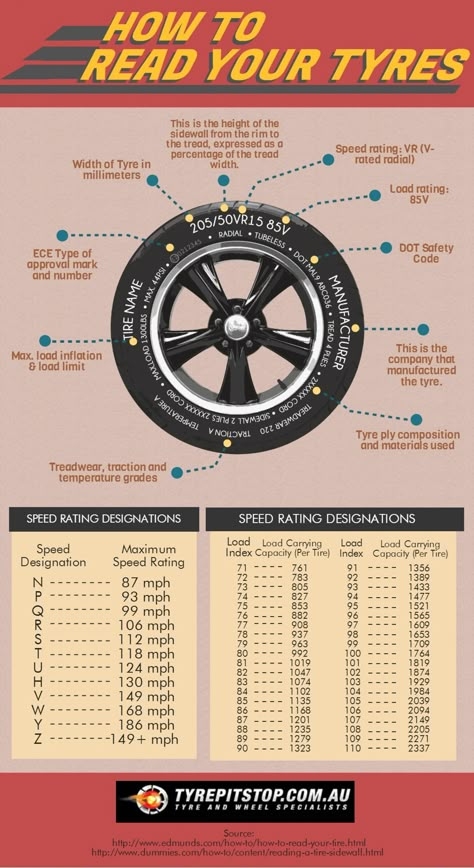 You should regularly pay attention to them in order to monitor the degree of tread wear. In most European and Customs Union countries, the minimum permitted tread depth is 1.6mm.
You should regularly pay attention to them in order to monitor the degree of tread wear. In most European and Customs Union countries, the minimum permitted tread depth is 1.6mm.
The four-digit code indicates the week and year of manufacture of the tire.
Contents:
The selection of tires is carried out taking into account a number of parameters - their diameter, width, and profile height must be taken into account; in addition, the speed index and the load index are of no small importance. The manufacturer always indicates these indicators on the sidewall. What they mean will be discussed below.
The value corresponds to the maximum permissible speed at which tires of this type can be operated. Accordingly, if a motorist plans to drive at a higher speed, it makes sense to think about buying tires with a higher index value.
Accordingly, if a motorist plans to drive at a higher speed, it makes sense to think about buying tires with a higher index value.
| Index | K | L | M | N | P | Q | R | S | T | U | H | V | VR | W | Y | ZR |
| Max. speed, km/h | 110 | 120 | 130 | 140 | 150 | 160 | 170 | 180 | 190 | 200 | 210 | 240 | >210 | 270 | 300 | >240 |
For example, if the tire has a mark that the speed index corresponds to the letter V, then this indicates that it is strongly not recommended to drive on these tires at a speed of more than 240 km / h.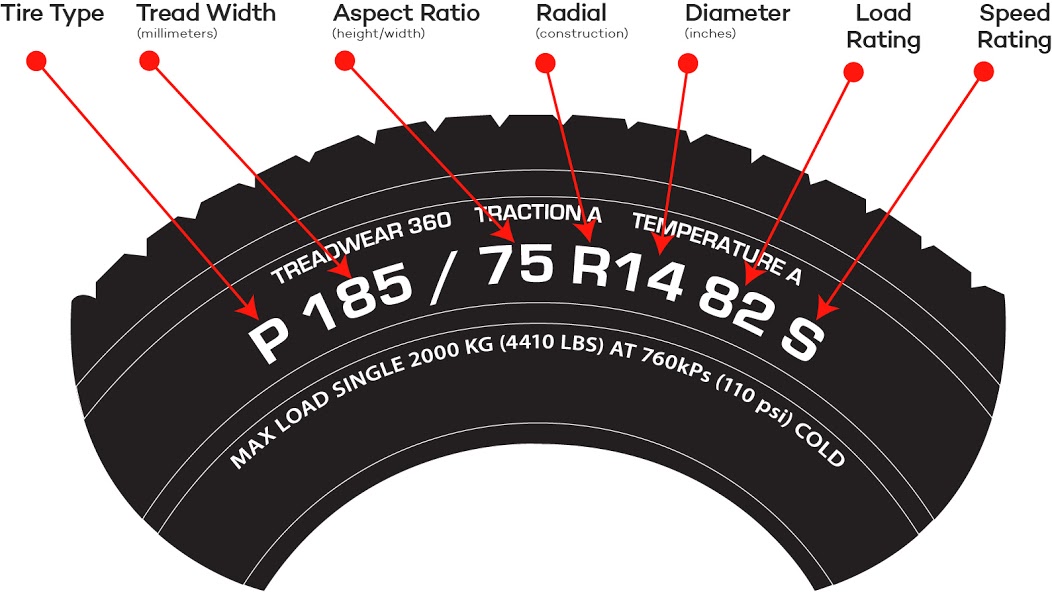
This is a no less significant parameter, which, in contrast to the value discussed above, is indicated by a number. In the tire label, the load index factor follows the tire diameter.
For example, a value of 91 indicates that the maximum allowable load per tire cannot exceed 615 kg. Accordingly, the total load calculated on 4 wheels should not exceed 2460 kg. The full load index table contains coefficient values from 1 to 279. For 13-inch passenger tires, the load index can be, for example, 75. And for R20 wheels, this coefficient will reach 120.
Load index table
Of course, the given load value does not mean that if it is exceeded, the tire will immediately be torn to pieces. A short-term excess of 20-30% is acceptable, but this should not become a habit.
According to EU regulations (ECE-R54), all tires that are planned to be used for commercial vehicles must be marked with a "Service Description" (translated as "Operating Conditions").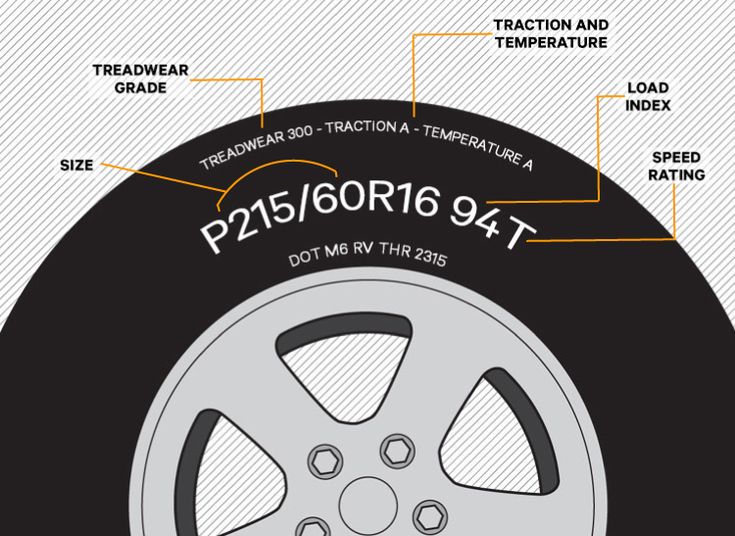 It is a special code next to the tire size, which carries information about the load index calculated for single and dual wheels (as an option - 102/100R).
It is a special code next to the tire size, which carries information about the load index calculated for single and dual wheels (as an option - 102/100R).
The information must be recorded on both sidewalls of the tire. The 1st digit indicates the load capacity of the tire in the case of a single installation - the 2nd corresponds to the level of the maximum load on one tire with twin wheels. Additional markings are used to indicate the corresponding tire loads at higher speeds. Additional markings are always circled.
205 - the width of the tire profile, indicated in mm. In this case - 205 mm .
55 - the value of the height of the tire profile in%, determined from its width. In the situation under consideration - 55% of 205 mm will be equal to = 112.75 mm.
Given that the tire profile is a relative value, the following point must be taken into account when selecting rubber: if instead of size 205/55 R16 want to install tires with size 215/55 R16 , then not only the width of the tire will increase, but also its height! Such a situation is in most cases unacceptable (the only exception is the situation in which both sizes are given in the car's operating book).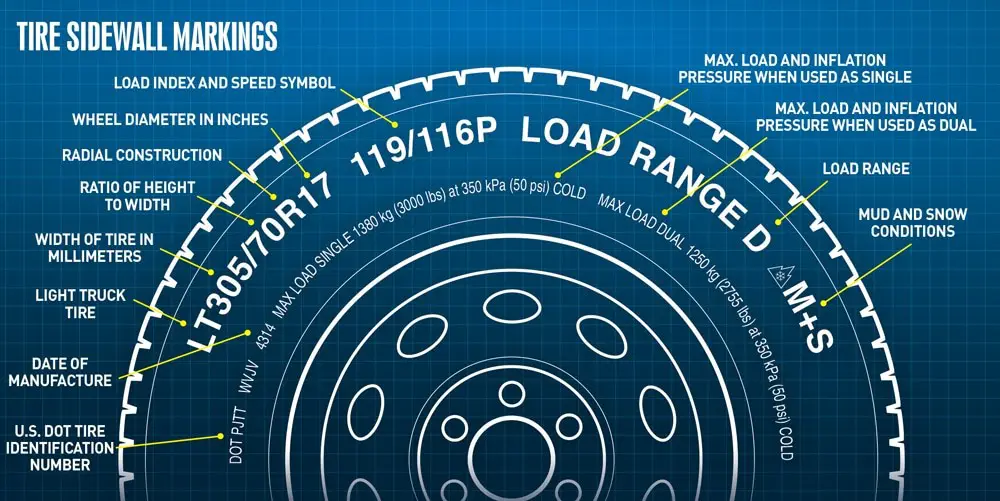 If this ratio is not given (as an option - 185 / R14С ), then this means that its value is 80-82%, and the tire is considered full profile. Reinforced tires with this marking are most often used on minibuses and light trucks - in these vehicles, the maximum allowable wheel load is of great importance.
If this ratio is not given (as an option - 185 / R14С ), then this means that its value is 80-82%, and the tire is considered full profile. Reinforced tires with this marking are most often used on minibuses and light trucks - in these vehicles, the maximum allowable wheel load is of great importance.
R - characterizes the design of the tire. In the situation under consideration, the tire is radial - the design determines the location of the carcass cord threads.
To assume that the designation R indicates the radius of the tire is completely wrong. The symbol refers solely to its radial design. There is also a diagonal design (it corresponds to the letter D ), but today almost no one produces it. Reason: poor performance.
16 - the value of the diameter of the wheel (disk), indicated in inches. This diameter for the tire is internal, for the disk it is external. That is why it is called "landing".
94 - load index (it was already mentioned above).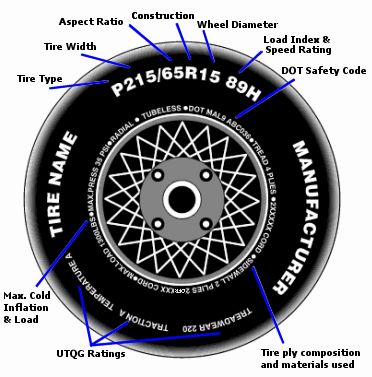 The interpretation of the most commonly used coefficients is given in the table of load indices. Often, the load is decoded on the tire itself: two numbers follow the Max Load inscription - the first in kg, the second in pounds.
The interpretation of the most commonly used coefficients is given in the table of load indices. Often, the load is decoded on the tire itself: two numbers follow the Max Load inscription - the first in kg, the second in pounds.
H - tire speed index. Please note that with this parameter, the tire manufacturer guarantees the normal operation of the rubber when the vehicle is driven non-stop at the specified speed for several hours. The decoding is given in the speed index table.
XL - this characteristic indicates that the tire is reinforced. Its load index is 3 units higher than conventional tires of the same size.
Separately, it is necessary to mention the RunFlat technology, which provides for the strengthening of the sides of the tire. As a result of damage, such a tire does not deflate and sag under the weight of the car, but allows you to drive a certain distance at a certain speed even after a complete loss of pressure. Those. The wheels are provided with additional protection. This quality is marked on tires in different ways - RSC, MOE, AOE - depending on the brand of car.
In addition to the above symbols in the form of letters and numbers, important information is indicated on the tires through colored labels. Below is an interpretation of each of them.
Apply in the lightest part of the tire. When installing a new tire on a rim, the yellow mark should be aligned with the heaviest part of the rim (easy to identify - it always corresponds to the nipple attachment point).
The label makes it possible to optimize the wheel balance and use lighter weights. On used tires, the yellow marking is no longer relevant - tire wear leads to a shift in its balance.
It has the appearance of a red dot on the tire and indicates the location of the maximum deviation of the radial force. At this point, the tire has the largest radius due to the greater number of layers and it is the most rigid. Inhomogeneity of tire plies is normal during tire manufacture.
Inhomogeneity of tire plies is normal during tire manufacture.
The red dot on the tires during installation must match the white dot on the rims (note that both marks are placed on the original car tires). The white dots on the rims indicate the location closest to the center of the wheel. Alignment of the red dot on the tires and the white dot on the rims is recommended to reduce the effect of maximum heterogeneity in the tire. So it is possible to provide a better balance of the power characteristics of the wheel. In conventional tire fitting, one should not attach great importance to the red mark - it is better to focus on the yellow mark, combining it with the nipple.
Corresponds to the individual number of the inspector conducting the final inspection of the tire at the manufacturing plant. The stamp can also be of other colors, this does not change the meaning of the label.
These designations are applied to the tire tread for easy identification of the tire in stock.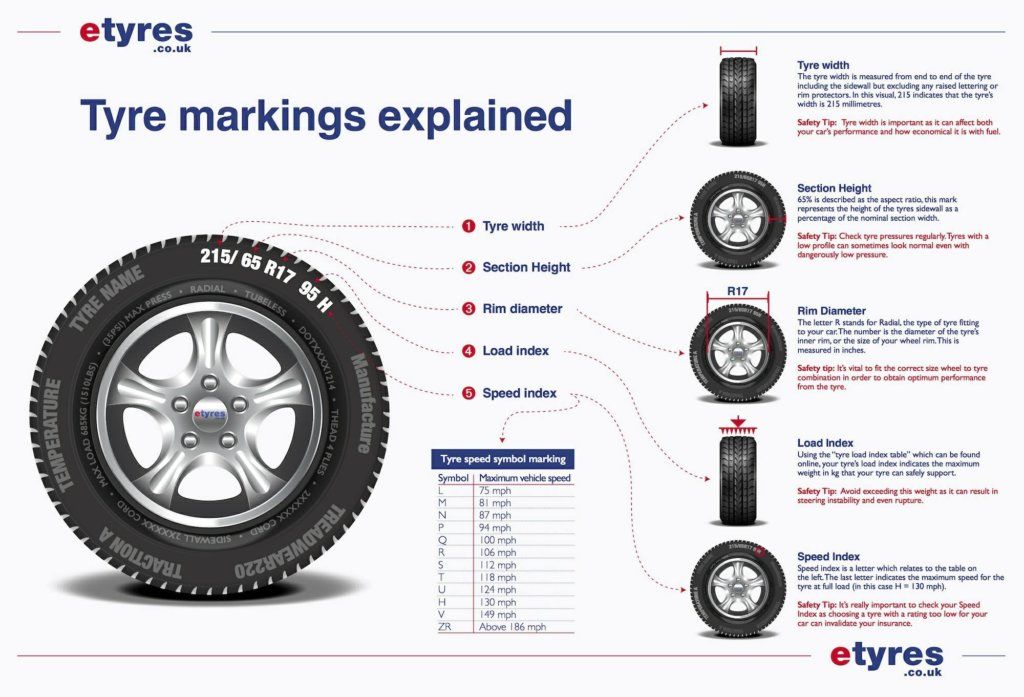 For tires of all models and different sizes, this marking is different. There is no single unification of the application of colored stripes. Details on the marking of certain colors on tires are prescribed in the manufacturer's specifications, and can also be indicated on its official website.
For tires of all models and different sizes, this marking is different. There is no single unification of the application of colored stripes. Details on the marking of certain colors on tires are prescribed in the manufacturer's specifications, and can also be indicated on its official website.
Colored stripes make it easy to identify the size and model of a single stack of tires stacked in a warehouse. The semantic load of color bars on the bus is unambiguous.
The letter C in the tire marking means that the tires are “reinforced” (added up to 8 reinforcing layers), with a large load factor.
The letter E, circled - compliance with European standards.
DA (stamped) - Minor manufacturing defects, which do not interfere with normal operation.
DOT - compliance with US quality standards.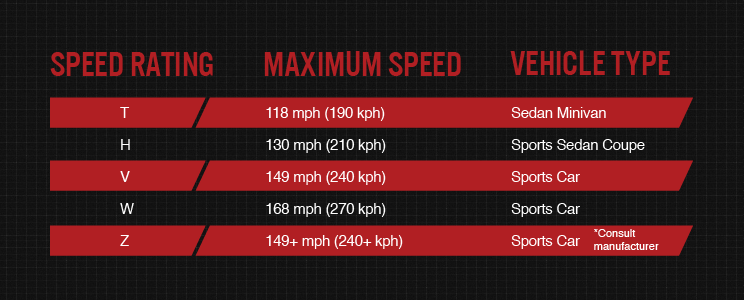
M + S (mud and snow) - the designation indicates that the tires are all-weather. The designation AS and All seasons are interpreted in the same way.
The snowflake design indicates that the rubber can be used in the most severe winter conditions. In its absence, the tire can only be used in the warm season and in the absence of a large amount of precipitation.
Made in Finland - country of origin.
MaxLoad - the maximum permissible load based on each wheel of the machine, in kg.
Max Pressure - the maximum allowable pressure level in the tire, in kPa.
Outside or Side Facing Out and Inside or Side Facing Inwards - indicates tire asymmetry. It is necessary to install with the Outside inscription outward, and the Inside inscription - inward.
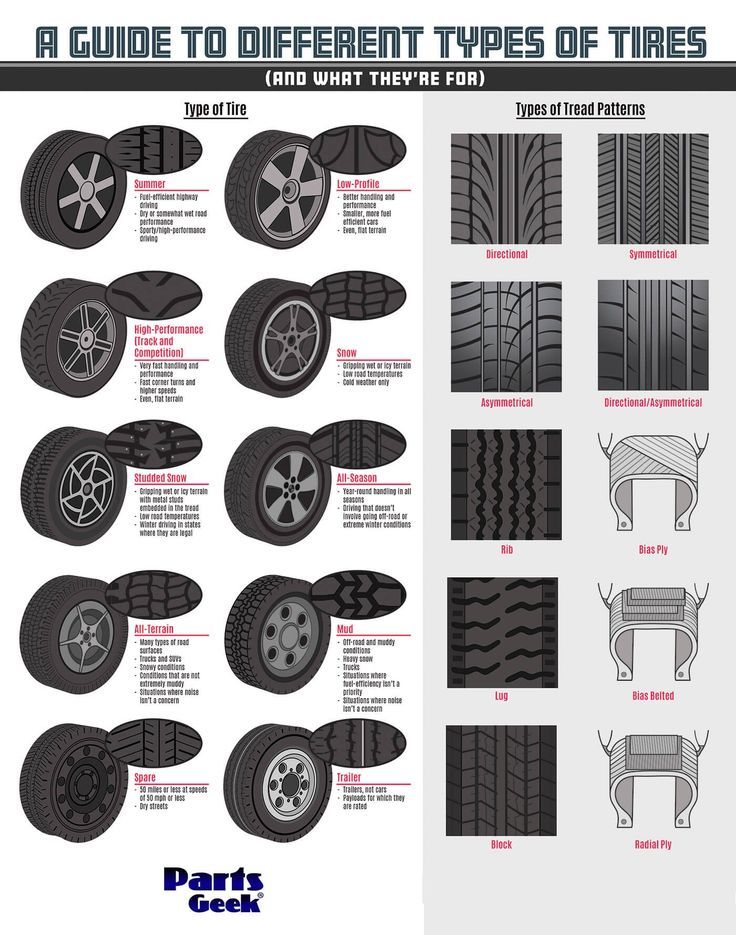
Sidewall - composition of the sidewall layer
Tubeless - tubeless tire. If this inscription is not present, then it is possible to use a tire only with a camera.
TubeType - indicates the possibility of operation with a camera only.
Steel - indicates the presence of a metal cord in the tire.